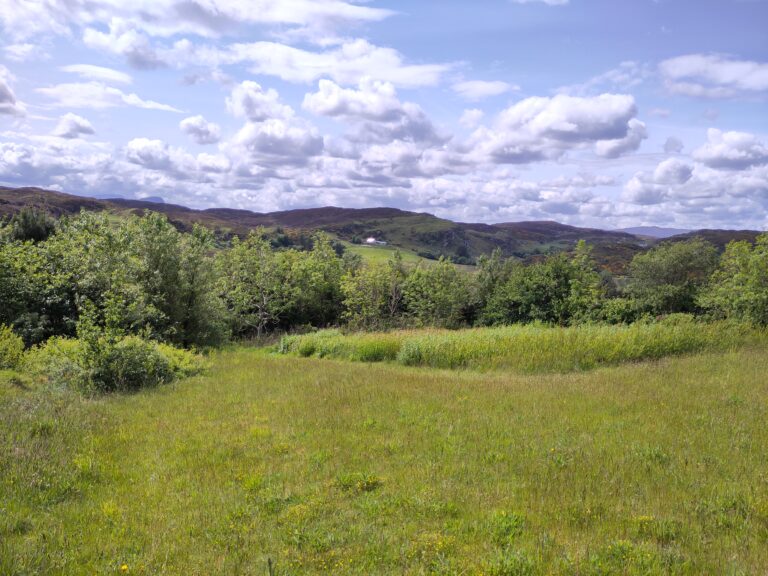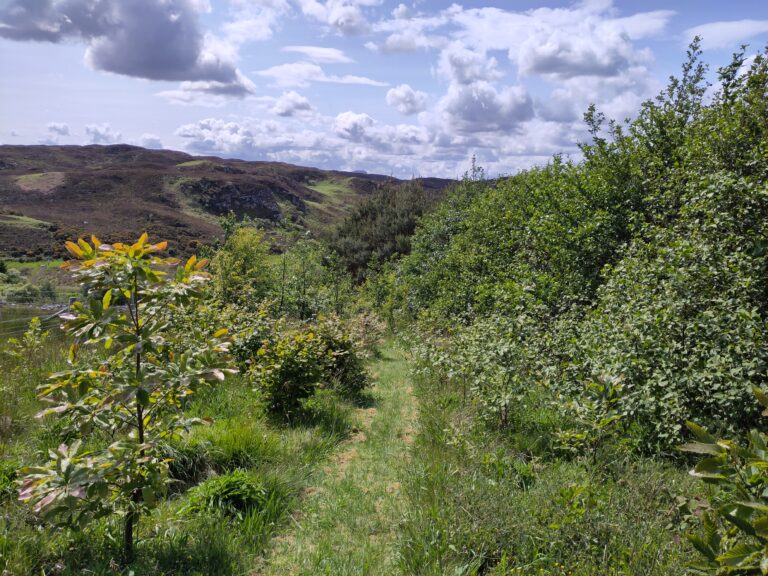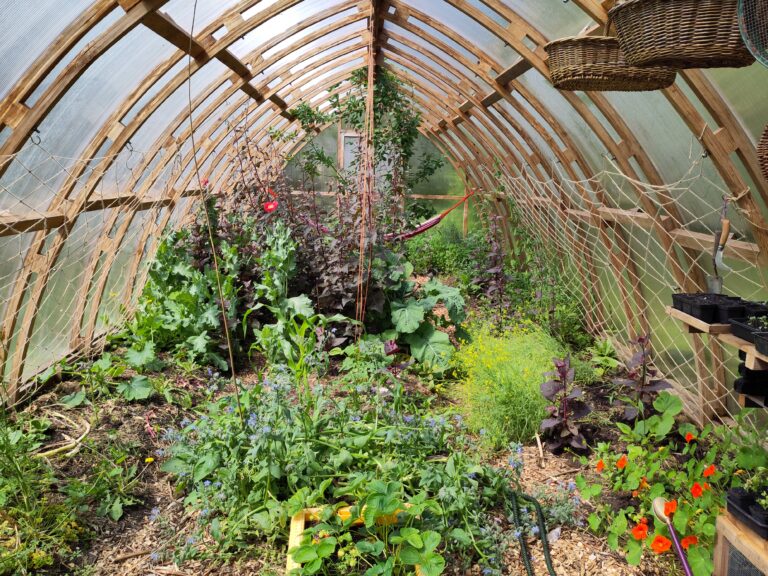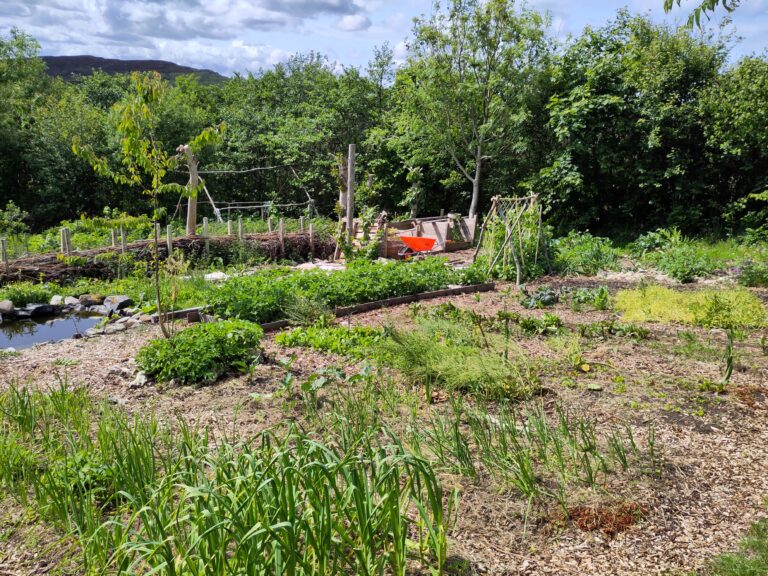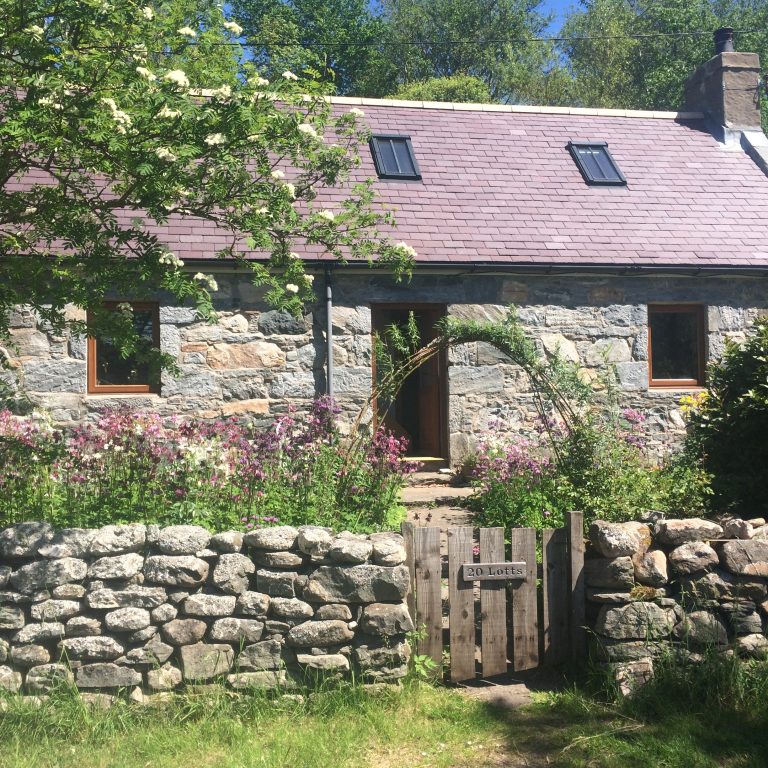Our croft is approximately 8 acres, in a small village called Skerray, right in the middle of the Scottish north coast. We are just a few hundred metres from the sea, with a kilometer long sandy beach to the east, and small harbour to the west. But the croft itself is relatively sheltered, in a small valley.
(Crofting is a Scottish tenant system whereby we, as crofters have a lifelong tenancy of the land, and also have our house located on the croft. It was originally a subsistence form of farming.)
The previous tenant planted much of the croft with broadleaf trees, starting in 1995. So we tend to call it a woodland croft as this is the main habitat, though we still have open areas.
Our croft is split into two separate areas. We have a 2 acre strip of land above the house where we grow fruit, vegetables, our timber polytunnel, basketry willow beds, Aurore’s basketry workshop and a hay meadow.
About 100m down the road is the second part to our croft, in a very wet valley. This area used to be a loch or swamp, and was drained to create the crofts in the 19th century. It is low lying and the drains have not been maintained for a very long time, so we have to accept the bogginess and work with it instead! Here we manage the trees under a coppice rotation for firewood, with other woodland areas left wild. We also free range our hens here in the woodland.
Our aims
We came here to live more in touch with the land and grow as much of our food as possible. Our aims for the land are continually changing as we observe and learn. We will never use any chemicals, and are trying to minimise any external inputs to the land, so that it becomes a closed system for nutrients. Everything we do aims to build soils and improve biodiversity, working with nature.
We don’t intend to (or pretend we can) be self sufficient, but instead we aim for a resilient lifestyle where our main needs are met from the croft. This leads us to prioritise food that we can grow here – fruit, vegetables and animals; and woodfuel that can heat our home, cook our food and provide us with hot water.



